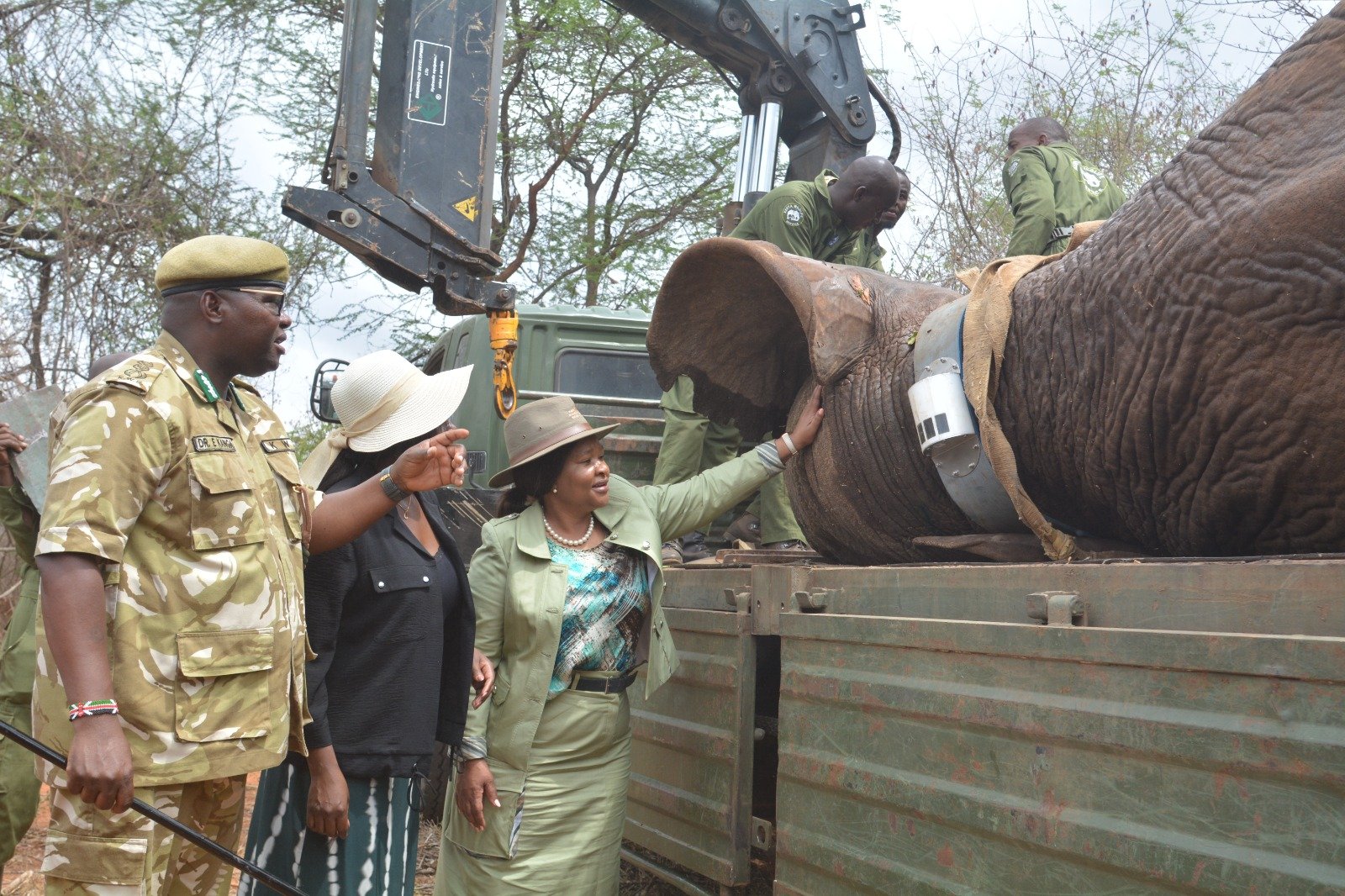.jpeg)
The Kenya Wildlife Service (KWS) has officially commenced a critical elephant translocation operation, moving approximately 50 elephants from Mwea National Reserve to Aberdare National Park.
This effort underscores KWS's commitment to improving human-wildlife coexistence and addressing environmental degradation within Mwea National Reserve.
The significance of this initiative cannot be overstated.
Between 1979 and 1989, Kenya faced an alarming decline in its elephant population, driven by rampant poaching for ivory.
Numbers fell drastically from an estimated 170,000 to just 16,000. The establishment of KWS through an Act of Parliament was a pivotal response to this crisis.
 Since then, comprehensive conservation efforts have helped reverse the decline, and the 2021 national wildlife census recorded an elephant population of 36,280.
Since then, comprehensive conservation efforts have helped reverse the decline, and the 2021 national wildlife census recorded an elephant population of 36,280.
This resurgence reflects the success of collaborative conservation measures.
Aligned with these ongoing conservation strategies, KWS and its partners developed the National Elephant Action Plan (2023-2032), which seeks to secure sustainable elephant populations, mitigate human-elephant conflicts, restore degraded habitats, and enhance the economic benefits of elephants to local communities.
Mwea National Reserve’s elephant population has surged from 49 individuals in 1979 to 156 today.
While this population growth marks conservation success, it has strained the ecosystem, with around 50 elephants venturing outside the reserve, leading to property damage and intensifying human-elephant conflict.
The translocation is therefore essential to protect the welfare of both the elephants and the surrounding communities.
This translocation also aligns with the newly launched KWS Strategic Plan (2024-2028), which emphasizes modern conservation techniques, community engagement, and the integration of technology.
 The plan envisions thriving wildlife populations, protected habitats, and harmonious coexistence between humans and wildlife.
The plan envisions thriving wildlife populations, protected habitats, and harmonious coexistence between humans and wildlife.
Core values such as professionalism, accountability, integrity, and inclusivity guide this vision.
The translocation will reduce pressure on the Mwea ecosystem while bolstering the elephant population in Aberdare National Park, promoting ecological balance.
This action will minimise competition for resources, fostering healthier ecosystems in both reserves.
Additionally, the reduction in human-wildlife conflict will enhance the socio-economic well-being of communities living near Mwea, creating a foundation for peaceful coexistence.
In Aberdare, the expected increase in elephant numbers will boost eco-tourism, driving economic benefits and supporting sustainable development.
Speaking at the launch, Cabinet Secretary for Tourism and Wildlife, Rebecca Miano, underscored the urgency of this exercise.
.jpeg) She highlighted that Kenya’s growing human population is encroaching on remaining elephant rangelands, exacerbating conflicts.
She highlighted that Kenya’s growing human population is encroaching on remaining elephant rangelands, exacerbating conflicts.
Miano emphasized that the translocation will yield long-term benefits by bolstering vulnerable elephant populations, enhancing genetic diversity, and safeguarding ecosystems critical to elephants and other species.
She further stressed that Kenya cannot conserve elephants in isolation—regional and international cooperation is vital.
She called on partners to support KWS in its mission to manage and grow Kenya’s elephant population effectively.
Governor Embu County, Hon. Cecily Mbarire, who witnessed the historic translocation, praised the initiative as timely, noting that it would not only reduce elephant numbers but also improve livelihoods for local communities.
She also highlighted the county's plans to rebrand Mwea National Reserve, an underexploited wildlife habitat.
 KWS Director General, Dr. Erustus Kanga, emphasized that the Strategic Plan incorporates adaptive management practices to respond proactively to challenges like habitat degradation and human-wildlife conflict.
KWS Director General, Dr. Erustus Kanga, emphasized that the Strategic Plan incorporates adaptive management practices to respond proactively to challenges like habitat degradation and human-wildlife conflict.
He reiterated that the translocation's goal is to improve local communities' socio-economic welfare and ensure the welfare of the remaining elephants in Mwea by reducing resource competition.
Members of the local community who participated in the translocation exercise were also in attendance.
The translocation is being conducted under a multidisciplinary technical team, adhering to IUCN guidelines and the Translocation and Immobilization Protocol for the African Elephant in Kenya (2019), ensuring the safety and well-being of the elephants throughout the process.
















